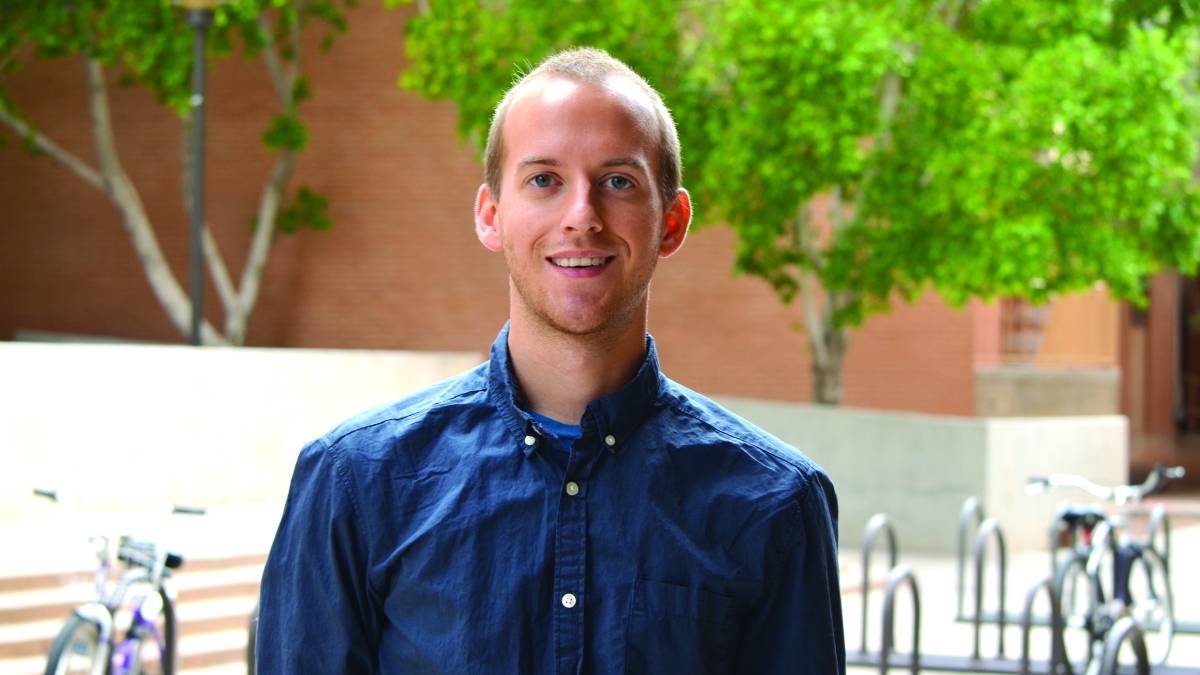Doctoral student to present addiction research at conference in Ireland

Ryan Bastle says that to have an impact in the field of addiction research, it is important to learn more about the factors that lead to addiction and the ones that prevent it.
Bastle, a neuroscience doctoral student at Arizona State University’s School of Life Sciences, joined the university in 2009 to pursue his graduate degree under the supervision of Janet Neisewander - a professor and neuroscientist in the school who studies neural mechanisms involved in drug dependence.
His research focuses on drug dependency and gene expression. Specifically, it centers on the role of a microRNA named miR-495 that is expressed in a key brain region involved in drug reinforcement and motivation, and appears to be regulated by cocaine exposure.
“A deeper understanding of the mechanisms by which drugs of abuse affect gene expression and, consequently, brain function, is key to designing better treatment to counteract addiction,” he explains.
Bastle will present his preliminary research findings at the International Behavioral Neuroscience Society (IBNS) conference in Dublin, Ireland, June 25-30. The non-profit society, comprised of scientists, clinicians, educators and therapists associated with behavioral neuroscience, recently awarded him a grant to travel to the conference. He is one of two students from ASU - the only university to boast two IBNS travel award recipients from a pool of hundreds of applicants - who will attend the gathering.
Neisewander says that Bastle’s research findings are exciting because microRNAs can be thought of as the master regulators of signaling pathways in the brain.
“Cocaine-induced decrease in miR-495 may play a key role in pathological brain changes that give rise to addiction,” Neisewander says. “Until now, research has focused on one disrupted pathway at a time, but increasing miR-495 may provide means by which multiple abnormal circuits can be normalized simultaneously.”
Bastle notes that since the mid-1990s, the significance of microRNA has evolved, first in relation to the development of cancer and more recently to complex neuropsychiatric disorders such as drug addiction.
“Research regarding the subject still has a long way to go, but this research project is the first to examine the role of miR-495 in drug addiction,” he says. “It points to a molecule that may be involved in processes related to a strong addiction – the willingness to go that extra mile to obtain drugs.”
He says even though researchers have made progress in their understanding of genes that regulate drug addiction, treatment strategies that use controlled gene expression technology are still in their infancy. He also points out that testing the impact of miR-495 on different brain regions could lead to further discoveries.
The Fargo, N.D. native is also involved in other research projects including one that examines the role of serotonin, a neurotransmitter widely associated with feelings of well-being, in drug reinforcement and motivation; another involves a study of nicotine addiction in adolescents. He recently wrapped up another collaborative project that delved into the changes in brain chemistry caused by stress following a physical attack.
“I enjoy research that spans different disciplines,” he says. “Research projects that I’ve been working on have been the perfect marriage between psychology, neurobiology and psychiatry.”
Bastle plans to continue his research in the field of neuroscience and hopes to pursue a post-doctoral fellowship in a lab that understands the importance of transdisciplinary collaboration.
Neisewander says the doctoral student has a bright future ahead of him.
“Ryan is a naturally talented scientist,” she says. “A problem-solver, a hard worker and a generous collaborator and mentor to others in the lab, Ryan has been a tremendous presence in our interdisciplinary neuroscience program."
The School of Life Sciences is an academic unit in ASU's College of Liberal Arts and Sciences.